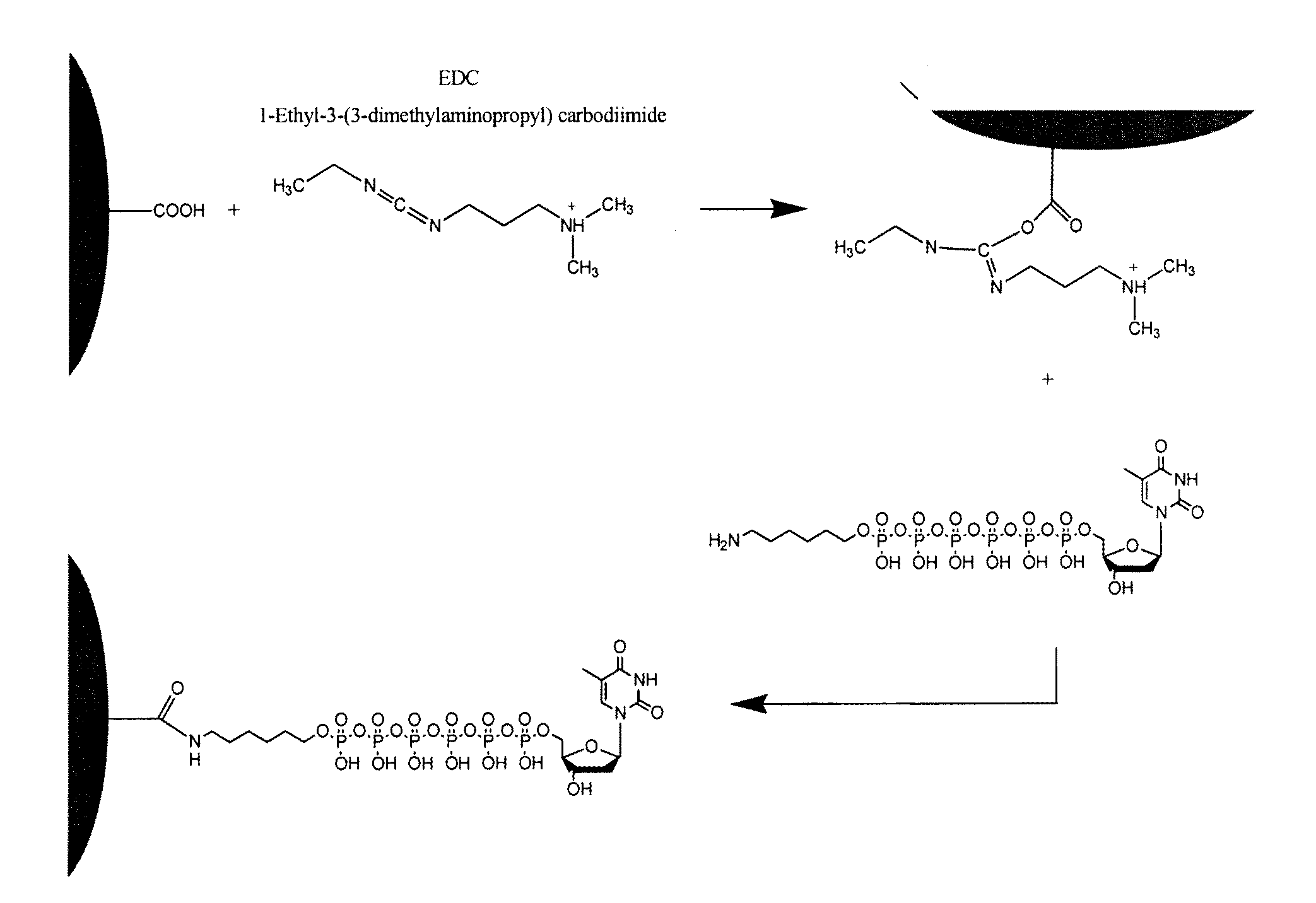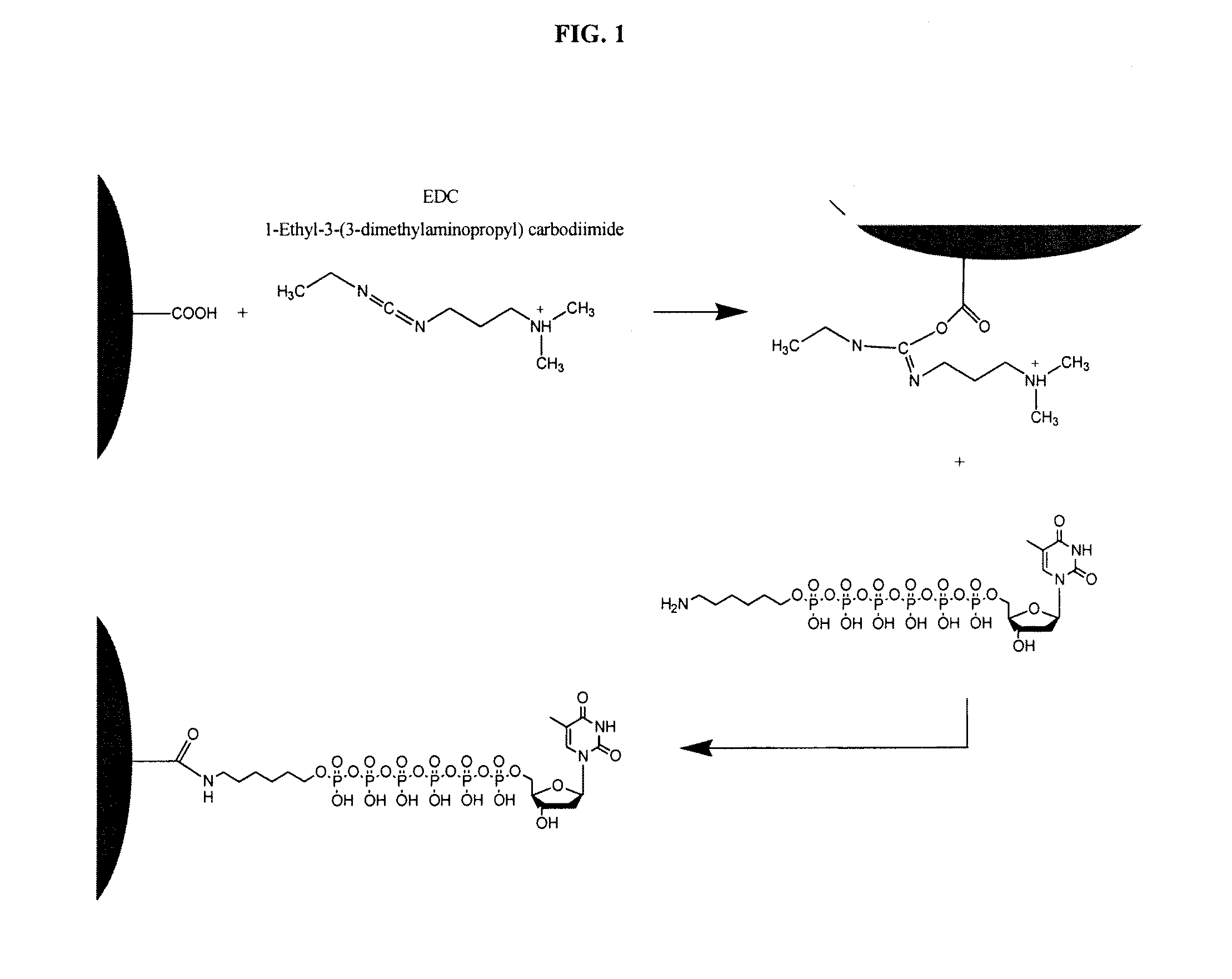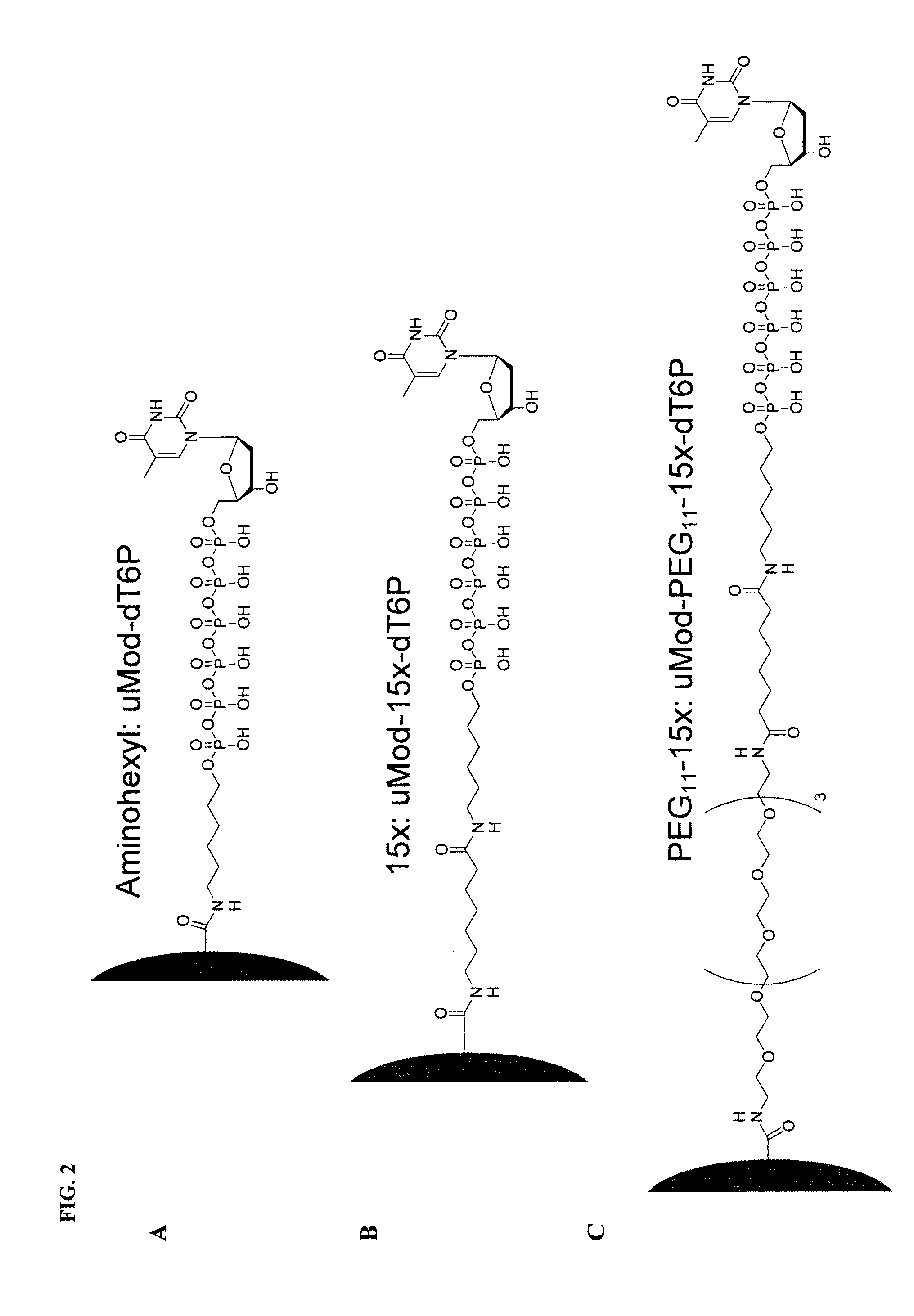Phospholink nucleotides for sequencing applications
a technology of phospholink nucleotides and sequencing, applied in the field of nucleic acid analysis, can solve the problems of inability to use expensive equipment, lack of label brightness, and instability of labels, and achieve the effects of improving the quality of fluorophore-labeled nucleotides, and improving the quality of phospholink nucleotides
- Summary
- Abstract
- Description
- Claims
- Application Information
AI Technical Summary
Benefits of technology
Problems solved by technology
Method used
Image
Examples
example 1
Coupling of Nanosphere Label to Phospholink Nucleotide
[0069]As illustrated in FIG. 1, a nanosphere with a surface derivatized with carboxyl groups was activated with 1-ethyl-3-(3-dimethylaminopropyl) carbodiimide to form an intermediate acetic N′-(3-(dimethylamino)propyl)-N-ethylcarbamidic anhydride compound, which, when contacted with a nucleoside polyphosphate, will result in a bond between the terminal phosphate of the thymine hexaphosphate and the activated functional group of the nanosphere. In the case of the illustration in FIG. 1, the nucleoside polyphosphate is a thymine hexaphosphate, but it will be appreciated that any nucleoside polyphosphate could be used in accordance with this method.
[0070]In one exemplary embodiment, 1.68 μM 25 nm micromod Red nanoparticles (micromod Partikeltechnologie GmbH, Rostock, Germany) and 168 μM NH2-PEG12-15x-dC6P (100 fold excess) were mixed in 25 mM MES buffer. 0.37 mg of EDC (5000 fold molar excess) were added while vortexing the solution...
example 2
Determining Spacing Necessary Between Bead Label and Nucleotide
[0072]In order to determine the optimal distance between the bead and the nucleoside polyphosphate, multiple different linkers were tested in an incorporation reaction. FIG. 3 displays the results from one such reaction. Of the three different linkers tested (A, B and C), only the nucleotide attached to a bead through linker C was successfully incorporated by the polymerase. The structures of the three different linkers A, B, and C are illustrated in FIG. 2A, B, and C respectively. In these particular experiments, the polymerase used was Φ29 DNA polymerase.
[0073]The following reagents were mixed (to final concentrations): 50 mM ACES buffer, pH 7.1, 75 mM potassium acetate, 5 mM DTT, 0.7 mM manganese acetate, 100 nM circular single-stranded, primed DNA template, and Φ29 DNA polymerase. The mixture was incubated for 10 minutes on ice, and then nucleotides and bead-conjugated nucleotides were added as appropriate to a 5 μM ...
example 3
Diffusion Time of Particles in Zero-Mode Waveguides
[0074]FIG. 4 shows the results of experiments measuring the diffusion times of unbound beads and beads linked to phospholink nucleotides. FIG. 4A shows the difference in diffusion times between the plain beads and the beads linked to adenosine tetraphosphate (A488-dA4P) in a zero-mode waveguide (ZMW) of with a diameter of 80 nm. FIG. 4B shows the results of similar measurements conducted in a ZMW with a diameter of 120 nm. These experiments show that the diffusion time decay for both the bare beads and the bead-labeled phospholink nucleotides are both complete between 1 and 10 milliseconds, which allows for a temporal differentiation between diffusion and incorporation events. Polymerase incorporation generally occurs in the 10 to 100 ms time scale.
PUM
| Property | Measurement | Unit |
|---|---|---|
| Polymeric | aaaaa | aaaaa |
Abstract
Description
Claims
Application Information
 Login to View More
Login to View More - R&D
- Intellectual Property
- Life Sciences
- Materials
- Tech Scout
- Unparalleled Data Quality
- Higher Quality Content
- 60% Fewer Hallucinations
Browse by: Latest US Patents, China's latest patents, Technical Efficacy Thesaurus, Application Domain, Technology Topic, Popular Technical Reports.
© 2025 PatSnap. All rights reserved.Legal|Privacy policy|Modern Slavery Act Transparency Statement|Sitemap|About US| Contact US: help@patsnap.com



